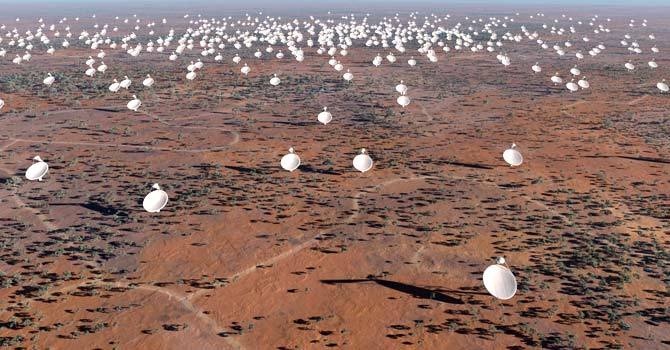It looks like you're using an Ad Blocker.
Please white-list or disable AboveTopSecret.com in your ad-blocking tool.
Thank you.
Some features of ATS will be disabled while you continue to use an ad-blocker.
9
share:
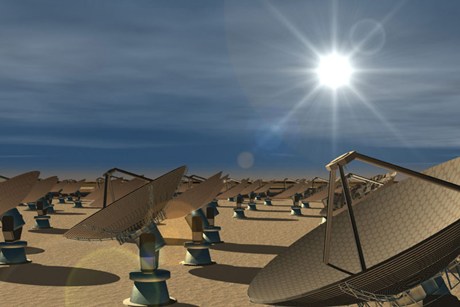
The Square Kilometre Array
Exploring the Universe with the world's largest radio telescope
www.skatelescope.org...
The Square Kilometre Array (SKA) is a radio telescope in development in Australia and South Africa which will have a total collecting area of approximately one square kilometre.[1] It will operate over a wide range of frequencies and its size will make it 50 times more sensitive than any other radio instrument. It will require very high performance central computing engines and long-haul links with a capacity greater than the current global Internet traffic.[2] It will be able to survey the sky more than ten thousand times faster than ever before.
With receiving stations extending out to distance of at least 3,000 kilometres (1,900 mi) from a concentrated central core, it will continue radio astronomy's tradition of providing the highest resolution images in all astronomy. The SKA will be built in the southern hemisphere, in Sub-Saharan states with cores in South Africa and Australia, where the view of the Milky Way Galaxy is best and radio interference least.[3]
With a budget of €1.5 billion, construction of the SKA is scheduled to begin in 2016 for initial observations by 2019 and full operation by 2024.[4][5] The headquarters of the project are in Manchester, in the UK.[6]
Organisation
The SKA is a global project with ten member countries which aims to provide answers to fundamental questions about the origin and evolution of the Universe.[7]
In April 2011, Jodrell Bank Observatory (of the University of Manchester) in Cheshire, England was announced as the location of the headquarters office for the project.[8]
In November 2011, the SKA Organisation was formed and the project moved from a collaboration to an independent, not for profit, company.[6] As of December 2012, the members of the SKA Organisation are:[9][6][10]
Australia: Department of Innovation, Industry, Science and Research
Canada: National Research Council
China: National Astronomical Observatories of the Chinese Academy of Sciences
Germany: Federal Ministry of Education and Research
Italy: National Institute for Astrophysics
New Zealand: Ministry of Economic Development
South Africa: National Research Foundation
Sweden: Onsala Space Observatory
The Netherlands: Netherlands Organisation for Scientific Research
United Kingdom: Science and Technology Facilities Council
India's National Centre for Radio Astrophysics is an associate member of SKA. Germany has also indicated its intention to join SKA
Locations
The headquarters of the SKA will be located at Manchester's Jodrell Bank Observatory, Cheshire, England.[15]
An automatic wideband radio scanner system was used to survey the radio frequency noise levels at the various candidate sites in South Africa.
Suitable sites for the SKA telescope need to be in unpopulated areas with guaranteed very low levels of man-made radio interference. Four sites were initially proposed in South Africa, Australia, Argentina and China.[16] After considerable site evaluation surveys, Argentina and China were dropped and the other two sites were shortlisted (with New Zealand joining the Australian bid, and 8 other African countries joining the South African bid):
Australia and New Zealand: The core site is located at the Murchison Radio-astronomy Observatory (MRO) near Boolardy 26°59′S 116°32′E in Western Australia 315 km north-east of Geraldton[17] on a flat desert-like plain at an elevation of about 460 metres. The most distant stations will be located in New Zealand.[18] [19]
South Africa: The core site is located at 30°43′16.068″S 21°24′40.068″E at an elevation of about 1000 metres in the Karoo area of the arid Northern Cape Province, about 75 km north-west of Carnarvon, with distant stations in Botswana, Ghana, Kenya, Madagascar, Mauritius, Mozambique, Namibia and Zambia.
On 10 March 2012 it was reported that the SKA Site Advisory Committee had made a confidential report in February that the South African bid was stronger.[20] The final decision on the site to be made by the project's board of directors was expected on 4 April 2012.[20] However a scientific working group was set up to explore possible implementation options of the two candidate host regions, and its report was expected in mid May 2012.[21]
On 25 May 2012 it was announced that the SKA will be split over the South African and African sites and the Australia and New Zealand sites
More: en.wikipedia.org...
Lisa Harvey-Smith on the SKA mega-telescope
With respect to the ET Life question, the SKA will be able to detect with high precision and in fine detail, the molecular composition of target exo-planets within our galaxy and to a radius much larger than the limited "dot" we've been able to search to date. It will also advance the SETI program in search of radiowave frequency emissions from any advanced ET civilizations that might exist within our galaxy or maybe even beyond (not sure).
However, in regards to the anticipated detection of other earth-like worlds in our own galaxy, we must begin with cautious optimism by developing a much better appreciation of the rather unique cosmological configuration of our own earth-moon-sun system/relationship without which life on earth would not resemble anything close to what we presently enjoy and experience ie: a limited temperature range, liquid water across 90% of the surface of the planet, etc etc. Thus, if just one rocky water world is discovered, then and only then, could a statistical probability average not unlike the Drake Equation be formulated. As it sits now, based on the unique cosmological configuration of the life-giving earth-moon-sun relationship, the very premise of the Drake Equation may be brought into disrepute (more on that in another post).
The purpose of this thread is to discuss the SKA and the various cosmic mysteries it will attempt to solve including the possibility of ET life and of ET sentient lifeforms not unlike we ourselves. Please keep it civil in the event of any "debate" ensuring, bearing in mind of course that the data is not yet in.
Best Regards,
NAM
edit on 26-12-2012 by NewAgeMan because: edit
reply to post by NewAgeMan
s&f and save for later. Think of the most far-out thing they may find, and then realize that it will be beyond that. A great machine, and I really don't know why Bill Gates or somebody doesn't throw hundreds of millions of dollars at projects like this.
s&f and save for later. Think of the most far-out thing they may find, and then realize that it will be beyond that. A great machine, and I really don't know why Bill Gates or somebody doesn't throw hundreds of millions of dollars at projects like this.
oh yah finally another huge telescope that we have no access to and any real information they find will never tell us about.. yah the world is
better...
Unique Cosmological Configuration of Earth-Moon-Sun Relationship
Strange Sun, Earth & Moon Coincidences
Solar Eclipse
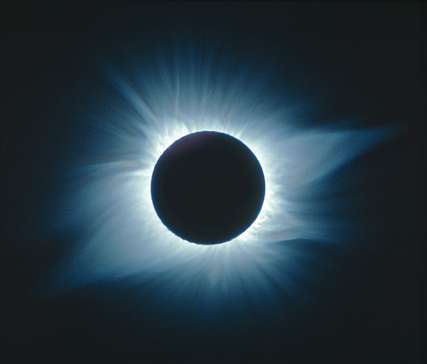
Earth-Moon Geometrical Relationship
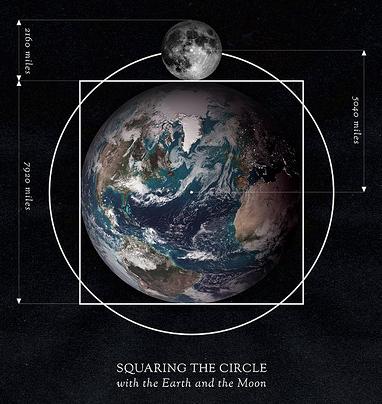
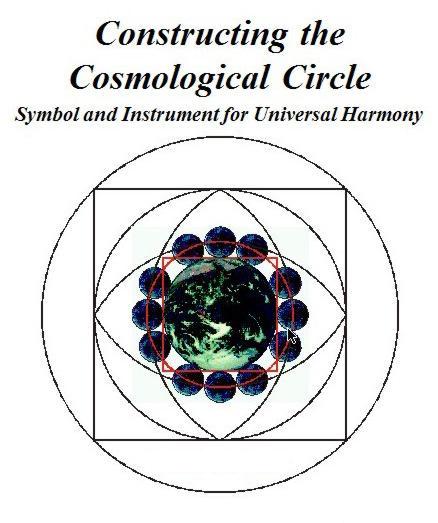
Be back later to post more on this "predicament"..
Originally posted by NewAgeMan
However, in regards to the anticipated detection of other earth-like worlds in our own galaxy, we must begin with cautious optimism by developing a much better appreciation of the rather unique cosmological configuration of our own earth-moon-sun system/relationship without which life on earth would not resemble anything close to what we presently enjoy and experience ie: a limited temperature range, liquid water across 90% of the surface of the planet, etc etc. Thus, if just one rocky water world is discovered, then and only then, could a statistical probability average not unlike the Drake Equation be formulated. As it sits now, based on the unique cosmological configuration of the life-giving earth-moon-sun relationship, the very premise of the Drake Equation may be brought into disrepute (more on that in another post).
Strange Sun, Earth & Moon Coincidences
Solar Eclipse

Earth-Moon Geometrical Relationship


Be back later to post more on this "predicament"..
and i,ll guarantee they,ll be delays and all sorts of of other things to hit this target date and bet we don,t see it in our life time.
This is truly the greatest scientific project ever undertaken in the history of the world.
If I was NASA I'd be wanting to piggy back on it, say by sending out a Radio Telescope Probe, to arrive at it's destination when this thing goes on line, and point at the earth, to calibrate info in regards to what an earth-like planet looks like in terms of it's molecular-biological "signature", as a point of reference/comparison. Does that make sense? I think it does.
Then we just zero in on all the best exo-planet candidates.
We also need to step up the planet hunting process to coincide with this venture, so as to come up with targets to look at.
Like I said, one 1 ROCKY WATER WORLD and there it is! Life! ET Life.
We'll get to see it in most of our lifetimes.
Cool.
If I was NASA I'd be wanting to piggy back on it, say by sending out a Radio Telescope Probe, to arrive at it's destination when this thing goes on line, and point at the earth, to calibrate info in regards to what an earth-like planet looks like in terms of it's molecular-biological "signature", as a point of reference/comparison. Does that make sense? I think it does.
Then we just zero in on all the best exo-planet candidates.
We also need to step up the planet hunting process to coincide with this venture, so as to come up with targets to look at.
Like I said, one 1 ROCKY WATER WORLD and there it is! Life! ET Life.
We'll get to see it in most of our lifetimes.
Cool.
edit on 26-12-2012 by NewAgeMan because: (no reason given)
Congratulations!
This topic and thread has been chosen to be discussed by the ATS LIVE crew this Saturday night between 6-9pm pst (9-12 est), as part of this weeks exciting "Turbo Topics" segment.


We are running 256kbps through the ATS Player but we now run a 32kbps stream for those of you with slower connections and there are also options to listen via other players on our relay site at Illustrial Website. You can also connect to the low bandwidth stream by clicking here to listen to the ATSLive Radio Show on ShoutCast
For more information and past shows, be sure to check out the ATSLive Show Threads Here.
Hope you'll listen in to the show!
Johnny
reply to post by JohnnyAnonymous
Hey that's pretty cool.
I'll be sure to tune in if I can.
This will open up a whole new vista of knowledge and discovery about the universe and in particular our galaxy, and if ET life is to be found, or even sentient ET life, this will be the method by which it will be detected, and we'll have the data within 10-20 years, so there's a real likelihood that within our lifetime there may be proof that life exists outside our solar system.
Edit: I've done quite a bit of reading and research in regards to the earth-moon-sun relationship that gives life to the earth, and something I'd like to have mentioned for the show, if possible, is that the end result is a planet with liquid water across some or much or even all of its surface, along with cloud formations (of the right composition as on earth). Continental drift could also be examined during the intermittent periods of clear sky. Yes as far as I know this thing is that powerful, and will also be able to give a complete breakdown of the molecular composition of the atmosphere, and even of the surface of the planet itself ie: certain rock and mineral compositions (ie: by the refracted spectrum of light). Apparently, it's that powerful and even moreso in regards to it's ability to determine the molecular composition of exo-planets.
So like I said - if we find just ONE rocky water world, then there it is!
Perhaps even a multi-moon system could fall into dynamic equillibrium as our singular giant moon (proportionallyt to the earth) has with the earth but in such a way that it's conducive to life, as it is here.
Thus we'd be looking at a super-earth, anywhere from 2 to 10 tens the size of earth, with oceans, clouds, and continental drift.
Such a world I GUARANTEE you, from the research that I've done, WILL be teaming with life (just like earth), provided it's getting the right type of sunlight.
Is it out there?
OMG - could you imagine the implications of that discovery?!!!, and no it won't kill Jesus a 2nd time if anyone might be thinking along THOSE lines..
It just changes the whole frame of reference, and if you then combine the "Jesus factor" then the implications are right out of this world in more ways than one, because of what it all says about the true nature of the human being. Such a discovery wouldn't make us small. It would MAGNIFY us as well, I'm sure of it, because it takes the breath away, and draws us to consider the unimaginable that resides in the unexplored domain of the as YET unknown unknown.. puts a smile on my face just thinking about that because it boggles the mind and we need to have our minds boggled, imho.
Best Regards,
NAM
Hey that's pretty cool.
I'll be sure to tune in if I can.
This will open up a whole new vista of knowledge and discovery about the universe and in particular our galaxy, and if ET life is to be found, or even sentient ET life, this will be the method by which it will be detected, and we'll have the data within 10-20 years, so there's a real likelihood that within our lifetime there may be proof that life exists outside our solar system.
Edit: I've done quite a bit of reading and research in regards to the earth-moon-sun relationship that gives life to the earth, and something I'd like to have mentioned for the show, if possible, is that the end result is a planet with liquid water across some or much or even all of its surface, along with cloud formations (of the right composition as on earth). Continental drift could also be examined during the intermittent periods of clear sky. Yes as far as I know this thing is that powerful, and will also be able to give a complete breakdown of the molecular composition of the atmosphere, and even of the surface of the planet itself ie: certain rock and mineral compositions (ie: by the refracted spectrum of light). Apparently, it's that powerful and even moreso in regards to it's ability to determine the molecular composition of exo-planets.
So like I said - if we find just ONE rocky water world, then there it is!
Perhaps even a multi-moon system could fall into dynamic equillibrium as our singular giant moon (proportionallyt to the earth) has with the earth but in such a way that it's conducive to life, as it is here.
Thus we'd be looking at a super-earth, anywhere from 2 to 10 tens the size of earth, with oceans, clouds, and continental drift.
Such a world I GUARANTEE you, from the research that I've done, WILL be teaming with life (just like earth), provided it's getting the right type of sunlight.
Is it out there?
OMG - could you imagine the implications of that discovery?!!!, and no it won't kill Jesus a 2nd time if anyone might be thinking along THOSE lines..
It just changes the whole frame of reference, and if you then combine the "Jesus factor" then the implications are right out of this world in more ways than one, because of what it all says about the true nature of the human being. Such a discovery wouldn't make us small. It would MAGNIFY us as well, I'm sure of it, because it takes the breath away, and draws us to consider the unimaginable that resides in the unexplored domain of the as YET unknown unknown.. puts a smile on my face just thinking about that because it boggles the mind and we need to have our minds boggled, imho.
Best Regards,
NAM
edit on 27-12-2012 by NewAgeMan because: (no reason given)
I think we're going to find one (another earth) within 30 years. And it will change the world and our understanding of ourselves and things won't
ever be the same again, may humanity come of age and come to appreciate fully our true place in the cosmos, not as mere "things", infintessimal
things, floating around in an impersonal universe, but as something utterly intrinsic to an almost eternal cosmic evolutionary process, right at the
leading edge as it were.
"And the last shall be first and the first last."
Maybe that applies at all levels, who knows anything's possible.
That's funny, but it sure makes a mockery out of our human ignorance and stupidity, oh well what can ya do we're only human as they say (what an excuse eh?).
"And the last shall be first and the first last."
Maybe that applies at all levels, who knows anything's possible.
That's funny, but it sure makes a mockery out of our human ignorance and stupidity, oh well what can ya do we're only human as they say (what an excuse eh?).
Should NASA get involved?
Originally posted by NewAgeMan
This is truly the greatest scientific project ever undertaken in the history of the world.
If I was NASA I'd be wanting to piggy back on it, say by sending out a Radio Telescope Probe, to arrive at it's destination when this thing goes on line, and point at the earth, to calibrate info in regards to what an earth-like planet looks like in terms of it's molecular-biological "signature", as a point of reference/comparison. Does that make sense? I think it does.
Such a radio telescope in space, having traveled for a full ten years, and maybe even continuing on in its journey to the center of the galaxy, could then turn, and participate in the survey, along with the ground-based systems, whereby it's "imput" is simply added to theirs, for even greater precision, and since you're out in space, the thing could unravel like 100 foot ball fields around and voila - SKA 2.0, but 10 times more powerful still, maybe more maybe X 100.
C'mon NASA step up to the plate here! (Are we maybe that influencial here at ATS? I wish. LOL)
I thought they were looking for the next unmanned deep-space mission, but if this doesn't qualify, what would?
edit on 27-12-2012 by NewAgeMan because: (no reason given)
edit on 27-12-2012 by NewAgeMan because: (no reason given)
Originally posted by NewAgeMan
Edit: I've done quite a bit of reading and research in regards to the earth-moon-sun relationship that gives life to the earth, and something I'd like to have mentioned for the show, if possible, is that the end result is a planet with liquid water across some or much or even all of its surface, along with cloud formations (of the right composition as on earth). Continental drift could also be examined during the intermittent periods of clear sky. Yes as far as I know this thing is that powerful, and will also be able to give a complete breakdown of the molecular composition of the atmosphere, and even of the surface of the planet itself ie: certain rock and mineral compositions (ie: by the refracted spectrum of light). Apparently, it's that powerful and even moreso in regards to it's ability to determine the molecular composition of exo-planets.
So like I said - if we find just ONE rocky water world, then there it is!
I didn't word that very well but you get the idea that there's only a very small range for life, and that it will always manifest itself, if anything like earth, in the form of a rocky water world (temperate) of land and oceans, and by "continental drift" what I meant was the differentiation between land and water masses, such that it would be implied to be taking place as it does here on earth, and cloud cover and clearing skies will also be detected by slight changes in the refracted light from the exo-planet's host sun. As far as I know, the SKA will be powerful enough to do that, and thus prove it beyond any reasonable doubt, that we've discovered another earth-like planet, or not, again.
On the other hand, the more planets that are found and found to be without life, the more extraordinary, and cosmologically unique we may consioder our earth-moon-sun system, but life may find a way, and in this case time will tell the story, thanks to the development and construction of the SKA Telescope.
Again, I think that NASA should send out 10 SKA's into space (which self unfurl when they get to where they're giong), to join in the upcoming survey of our galaxy, and the billions of galaxies within which ours is immersed.
That's what I'd order up if I was the President of the United States.
However, if we ever found such a place and a way to get there, it might not be in the best interest of that planet's future health and well being..
Then again if we got even half way there I'll bet we'd find ourselves facing ever increasing powers and principalities who would either send us back or shepherd us there, as appropriate, but if the United States was involved and maybe even leading the charge, they probably wouldn't let us break through the quarantine.
edit on 27-12-2012 by NewAgeMan because: (no reason given)
reply to post by NewAgeMan
Solve Cosmic Mysteries?
Even ET Life?
You seriously believe that a bunch of non-high-tech radio telescope will solve the mysteries of the cosmos, were you OK when putting such a title? DREAM ON!
This is just laughable.
In straight text: There is either ET already and some from NASA and the gov are playing like they don't know anything OR lots of years would pass for any significant research..
Solve Cosmic Mysteries?
Even ET Life?
You seriously believe that a bunch of non-high-tech radio telescope will solve the mysteries of the cosmos, were you OK when putting such a title? DREAM ON!
This is just laughable.
In straight text: There is either ET already and some from NASA and the gov are playing like they don't know anything OR lots of years would pass for any significant research..
edit on 30-12-2012 by ImpactoR because: (no reason given)
Originally posted by ImpactoR
reply to post by NewAgeMan
Solve Cosmic Mysteries?
Even ET Life?
You seriously believe that a bunch of non-high-tech radio telescope will solve the mysteries of the cosmos, were you OK when putting such a title? DREAM ON!
This is just laughable.
In straight text: There is either ET already and some from NASA and the gov are playing like they don't know anything OR lots of years would pass for any significant research..
Do not ASSUME (you know what they say about that..).
By ET life I mean simply that - extraterrestrial life, nothing more i.e.: another earth-like world, a second one.
That, in and of itself would resolve one of the greatest cosmic mysteries ever to face mankind here on earth ie: that the cosmos is teaming with life and with other earth-like worlds even within our own galaxy, aside from ideas surrounding the expansion of the universe, galactic formation, dark matter, a detailed structural survey of the galaxies in the known universe, etc etc. and since it's a radio telescope, not an optical one, then it will be capable of "perceiving" via a molecular analysis, just what's out there, including the composition of exoplanets in order to get an idea as to how prevalent life really is in the universe, which would resolve another cosmic mystery.
In other words it wouldn't have have to detect sentient ET life with advanced tech, to completely alter our view of the universe and our place in it, so yeah, cosmic mysteries solved, not all, but some very very big ones.
Best Regards, (no hard feelings)
NAM
By Isis and Osiris (and the messed up search function)
I summon this thread back to the living!
-Selah
So, we all marveled at this technological achievement when it was being planned and built. The one in SA is still just over half complete (gave us a good idea what chaos exists at the center of the Milky Way with less than 20 set up).
Here is some news, not from a team of astronomers from prestigious learning institutions, but a doctorate student who used the Australian SKA to observe interference between its location and distant radio sources it could detect (frozen hydrogen is colder than instrument and in order to “see” it directly, the instrument has to be colder than what it is looking at. So she looked for interfering particles causing the radio waves to “twinkle”, or, scintillate).
Phys.org, 2/5/2021: Student astronomer finds missing galactic matter.
She found several strands of super cold hydrogen that is part of the Milky Way but never became part of any structure.
Cool science news on its own.
But imagine that we create a nuclear fusion reactor and put it in a space craft. Then we travel through the galaxy scooping up frozen hydrogen as fuel as we accelerate through space?
This is why we are going to the stars!!
I summon this thread back to the living!
-Selah
So, we all marveled at this technological achievement when it was being planned and built. The one in SA is still just over half complete (gave us a good idea what chaos exists at the center of the Milky Way with less than 20 set up).
Here is some news, not from a team of astronomers from prestigious learning institutions, but a doctorate student who used the Australian SKA to observe interference between its location and distant radio sources it could detect (frozen hydrogen is colder than instrument and in order to “see” it directly, the instrument has to be colder than what it is looking at. So she looked for interfering particles causing the radio waves to “twinkle”, or, scintillate).
"We found five twinkling radio sources on a giant line in the sky. Our analysis shows their light must have passed through the same cold clump of gas," Ms Wang said.
Just as visible light is distorted as it passes through our atmosphere to give stars their twinkle, when radio waves pass through matter, it also affects their brightness. It was this 'scintillation' that Ms Wang and her colleagues detected.
Phys.org, 2/5/2021: Student astronomer finds missing galactic matter.
She found several strands of super cold hydrogen that is part of the Milky Way but never became part of any structure.
Cool science news on its own.
But imagine that we create a nuclear fusion reactor and put it in a space craft. Then we travel through the galaxy scooping up frozen hydrogen as fuel as we accelerate through space?
This is why we are going to the stars!!
originally posted by: TEOTWAWKIAIFF
By Isis and Osiris (and the messed up search function)
I summon this thread back to the living!
I (johnnyanonymous) do declare as a member of ATS Staff that on this day February 6th, 2021 at 7:02pm (PST), did witness a member under the monikor "TEOTWAWKIAIFF" did bring this thread back to the living!
Johnny
originally posted by: TEOTWAWKIAIFF
But imagine that we create a nuclear fusion reactor and put it in a space craft. Then we travel through the galaxy scooping up frozen hydrogen as fuel as we accelerate through space?
This is why we are going to the stars!!
Thats a really cool idea! As I read the article at the bottom this was said, this statement hit me;
Professor Murphy said: "This is the first time that multiple 'scintillators' have been detected behind the same cloud of cold gas. In the next few years, we should be able to use similar methods with ASKAP to detect a large number of such gas structures in our galaxy."
Exciting times were living in.
Johnny
a reply to: JohnnyAnonymous
We are on the cusp.
James Webb Space Telescope will be as life changing as Hubble. And when we get the VLT arrays set up we will be like Galileo looking at Saturn through a telescope for the first time.
Our mind are extensions of of our perceptions. And the further we see, the more we know.
Our toes are on the edge (again. We landed on the moon and seemed to have been barred from further exploration but with fusion, they can’t block us anymore. Slow fusion or fast... doesn’t matter. We are going to the stars!).
This is a great time to be alive!
We are on the cusp.
James Webb Space Telescope will be as life changing as Hubble. And when we get the VLT arrays set up we will be like Galileo looking at Saturn through a telescope for the first time.
Our mind are extensions of of our perceptions. And the further we see, the more we know.
Our toes are on the edge (again. We landed on the moon and seemed to have been barred from further exploration but with fusion, they can’t block us anymore. Slow fusion or fast... doesn’t matter. We are going to the stars!).
This is a great time to be alive!
edit on 6-2-2021 by TEOTWAWKIAIFF because: Unbelievable... Stoopid autocorrectives
new topics
-
Parker Solar Probe is about to Kiss the Sun
Space Exploration: 1 hours ago -
Drones On Live Beach Cam New Jersey.
Aliens and UFOs: 2 hours ago -
Christmas Dinner ??
Food and Cooking: 3 hours ago -
Merry Christmas !!
General Chit Chat: 6 hours ago
top topics
-
This is an interesting picture. Do we actually pick our leaders?
Politicians & People: 17 hours ago, 11 flags -
Merry Christmas !!
General Chit Chat: 6 hours ago, 10 flags -
Christmas Dinner ??
Food and Cooking: 3 hours ago, 3 flags -
Drones On Live Beach Cam New Jersey.
Aliens and UFOs: 2 hours ago, 3 flags -
Parker Solar Probe is about to Kiss the Sun
Space Exploration: 1 hours ago, 2 flags
active topics
-
Trump says ownership of Greenland 'is an absolute necessity'
Other Current Events • 35 • : andy06shake -
Parker Solar Probe is about to Kiss the Sun
Space Exploration • 3 • : McGinty -
Merry Christmas !!
General Chit Chat • 12 • : Encia22 -
Post A Funny (T&C Friendly) Pic Part IV: The LOL awakens!
General Chit Chat • 7949 • : underpass61 -
Mood Music Part VI
Music • 3759 • : lilzazz -
Drones On Live Beach Cam New Jersey.
Aliens and UFOs • 1 • : WeMustCare -
UnitedHealthcare CEO Brian Thompson shot dead in Midtown Manhattan, masked gunman at large
Other Current Events • 176 • : WeMustCare -
Spiritual Solstice
Short Stories • 17 • : SprocketUK -
This is an interesting picture. Do we actually pick our leaders?
Politicians & People • 10 • : montybd -
Christmas Dinner ??
Food and Cooking • 1 • : Naftalin
9

